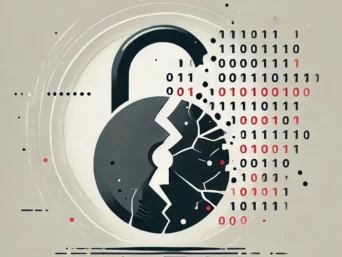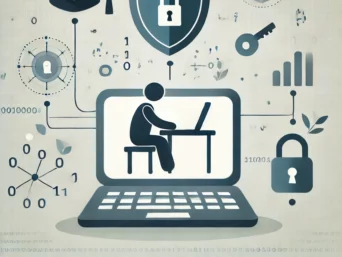Basic Guide to Home Network Security
With the growing number of people working from home, securing home networks has become a critical priority. This article provides a comprehensive guide to securing your home network, protecting your personal and professional data from cyber threats.
1. Understanding the Fundamentals of Home Networking
Components of a Network
A typical home network consists of a few essential components. First, the router plays a central role by enabling the connection between various devices on the network and access to the Internet. Next, there are connected devices such as computers, smartphones, tablets, and Internet of Things (IoT) devices, which communicate with each other and with the router to exchange data. Finally, the modem connects to the Internet Service Provider (ISP) by converting digital signals into analog signals and vice versa.
Common Vulnerabilities
Unfortunately, many vulnerabilities threaten the security of home networks. Among the most common is phishing, a fraud technique where attackers impersonate legitimate entities to deceive users and extract sensitive information such as login credentials or banking data. Additionally, the exploitation of outdated software poses a major threat, as unpatched security vulnerabilities can be exploited by attackers to compromise network devices. Finally, unsecured Wi-Fi networks are an easy target for attackers, as they allow unauthorized access to data transmitted over the network, endangering the confidentiality and integrity of information.
2. Securing the Router
The heart of your home network is your router, and effectively securing it is crucial to prevent the risk of someone connecting to your network by hacking the Wi-Fi. A malicious neighbor, for instance? By strengthening your router’s security, you establish a solid foundation for protecting your personal data from online threats.
Change the Default Name (SSID) and Password
Avoid generic names that identify the router's model or manufacturer. Create a strong password combining letters, numbers, and symbols, as detailed in the next chapter.
Disabling WPS
WPS, or Wi-Fi Protected Setup, is a protocol designed to simplify the process of connecting devices to a Wi-Fi network using a PIN code or a synchronization button. However, despite its initial goal of facilitating home network setup, WPS has significant vulnerabilities that compromise network security. It is recommended to check your router settings and disable WPS if this feature is not nécessaire.
Regular Firmware Updates
Firmware updates often fix security vulnerabilities. Check the manufacturer’s website for the latest updates.
It is worth noting that the vast majority of Internet Service Providers automatically update your routers.
Enable Encryption
Wi-Fi networks can use different types of encryption, but not all are equal in terms of security. WPA3 is the latest and most secure standard, offering improvements over WPA2. However, not all devices are compatible with this type of encryption. If your devices do not support WPA3, make sure to use at least WPA2.
3. Password Management
Strong and Unique Passwords
A strong password is essential for protecting your online accounts. An example of a good password is "B@n4n4s&Ch0c0late_2025!" – it combines uppercase and lowercase letters, numbers, and symbols, and has a significant length. Avoid using easily guessable personal information, such as birthdays or pet names.
Use a different password for each account. This ensures that if one password is compromised, the other accounts remain secure.
Change your passwords regularly, especially for accounts containing sensitive information. Even a strong password can be compromised over time, so updating it every 3 to 6 months is a good practice.
Using a Password Manager
These tools are practical solutions for managing your passwords. They generate strong passwords, store them securely, and automatically fill them in when you log into your accounts. Additionally, many offer extra features, such as alerts in case of data breaches.
Two-Factor Authentication (2FA)
Where possible, enable two-factor authentication. This adds an extra layer of security by requiring a second element (such as a code sent to your phone) in addition to the password to access your account.
4. Setting Up a Guest Network
Benefits of a Guest Network
A guest network separates your visitors' traffic from your main network. This means that if a guest connects to your Wi-Fi with a device infected with malware, the risk of that malware spreading to your personal devices is reduced.
By providing separate Wi-Fi access for guests, you prevent them from accessing your shared devices on the network, such as printers, NAS (Network Attached Storage), or other smart devices. This helps protect your personal and professional data from unauthorized access.
Security Settings for the Guest Network
Enable encryption and use a strong password, different from your main network. Refer to the previous chapters on password management and router security.
5. Using a VPN
What is a VPN ?
A VPN creates a secure tunnel between your device and the Internet. When you connect to a VPN, your internet traffic is sent through this encrypted tunnel, preventing others, including your Internet Service Provider, from seeing your online activities.
Benefits of a VPN
A Virtual Private Network (VPN) encrypts your internet traffic, making it unreadable to others. When you connect to public Wi-Fi in places like cafes or airports, a VPN protects your online activities from prying eyes.
For professionals working from home, a VPN ensures that communications with the office remain secure, especially when accessing sensitive company files.
Choosing a Reliable VPN
Not all VPNs are equal in terms of security and privacy. Choose a reputable VPN provider that does not keep logs of your activities and uses military-grade encryption to ensure the security of your data.
6. Device Updates
Importance of Updates
Updates play a vital role in the security of your devices and networks. They are not just there to add new features or fix minor bugs; they are crucial for your online security.
Software updates often fix security vulnerabilities. Cybercriminals are constantly looking to exploit these weaknesses to gain illegal access to systems. By installing the latest updates, you close these potential entry points.
Most operating systems and applications offer the option to automate updates. This ensures that you receive security patches as soon as they are available, without having to remember or check them manually.
By keeping your devices and software up to date, you take a crucial proactive step in securing your home network against cyberattacks.
IoT Device Security
Don't forget about less obvious devices such as printers, security cameras, and other IoT (Internet of Things) devices. These devices can also be targets for hackers and should be regularly updated.
Change the default passwords and ensure they receive security updates properly.
7. Awareness of Cyber Threats
In the fight against cyber threats, technology alone is not enough. The first line of defense is you! User awareness and education play a crucial role.
Understanding the threats and knowing how to respond is essential for effective defense.
Precautions on Public Networks
Avoid using public Wi-Fi networks for sensitive activities. If necessary, use a VPN. Refer to Chapter 5, dedicated to using VPNs.
Training and Awareness
Stay informed about current threats and learn how to identify them.
If you want to deepen your knowledge of cybersecurity and become a key player in defending against cyber threats, we invite you to explore our online training in Information Security Awareness. This comprehensive course covers everything from the basics of cybersecurity to advanced protection strategies, and is designed to equip individuals of all levels with the skills necessary to defend against cyberattacks.
Visit our training page to learn more and start your journey towards better digital security.
Conclusion
The importance of home network security in our digital age cannot be overstated. As online threats continue to evolve and become more complex, it is crucial for each of us to take proactive steps to protect our digital information. By adopting the practices outlined in this article, you not only strengthen the defenses of your home network but also contribute to the creation of a safer digital environment for all.
It is essential to remember that internet security is an ongoing process, not a fixed destination. Technology and threats are constantly changing, requiring continuous vigilance and adaptation. By keeping your systems and devices up to date...
By keeping your systems and devices up to date, staying informed about the latest cybersecurity trends, and regularly applying best security practices, you can significantly reduce your vulnerability to cyberattacks.
Finally, remember that information security is a shared responsibility. By securing your home network, you not only protect your own data but also that of your contacts, colleagues, and friends who interact with your network. A collective effort in cybersecurity can lead to a safer and more resilient digital future for all.

